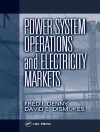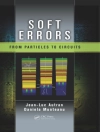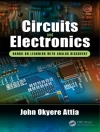This textbook starts with a review of the principles of operation, modeling and control of common solar energy and wind-power generation systems before moving on to discuss grid compatibility, power quality issues and hybrid models of Solar PV and Wind Energy Conversion Systems (WECS). MATLAB/SIMULINK models of fuel cell technology and associated converters are discussed in detail. The impact of soft computing techniques such as neural networks, fuzzy logic and genetic algorithms in the context of solar and wind energy is explained with practical implementation using MATLAB/SIMULINK models.This book is intended for final year undergraduate, post-graduate and research students interested in understanding the modeling and control of Solar PV and Wind Energy Conversion Systems based on MATLAB/SIMULINK.- Each chapter includes “Learning Objectives” at the start, a “Summary” at the end and helpful Review Questions- Includes MATLAB/SIMULINK models of different control strategies for power conditioning units in the context of Solar PV- Presents soft computing techniques for Solar PV and WECS, as well as MATLAB/SIMULINK models, e.g. for wind turbine topologies and grid integration- Covers hybrid solar PV and Wind Energy Conversion Systems with converters and MATLAB/SIMULINK models- Reviews harmonic reduction in Solar PV and Wind Energy Conversion Systems in connection with power quality issues- Covers fuel cells and converters with implementation using MATLAB/SIMULINK
Tabela de Conteúdo
1. INTRODUCTION 1.1. What is Energy?1.1.1. The Energy Scenario1.1.2. Energy crisis – Global and Indian1.2. Energy Efficiency 1.2.1. Efficient Energy Use1.3. Classification of Energy Sources1.4. Solar Photovoltaics1.4.1. Solar radiation1.4.2. Measurement of Solar Radiation1.5. Wind Energy 1.5.1. Renewable Energy in the 12th Five-Year Plan [2012-2017]1.5.2. Barriers to achieving higher growth1.6. Benefits of Renewable Energy Sources1.7. Trends in Energy Consumption1.7.1. Annual Energy Consumption1.7.2. RES in INDIA1.7.3. National Policy Measures supporting Renewables1.7.4. Renewable Energy Law1.7.5. Generation Based Incentive1.7.6. Renewable Energy Certificate scheme1.7.7. National Clean Energy Fund1.7.8. Other initiatives: Renewable Regulatory Fund Mechanism1.7.9. Land allocation policy1.7.10. Grid Integration Issues1.7.11. Grid transmission planning process1.7.12. Interconnection standards1.7.13. Green Energy Corridor1.7.14. India Smart Grid Task Force1.8. Worldwide Potentials of Renewable Energy Sources 1.9. Need for New Energy Technologies 1.10. Introduction to MATLAB and SIMULINK1.11. Introduction to Soft Computing1.11.1. Soft Computing techniques1.11.2. Applications of soft computing techniques in solar energy1.11.3. Applications of Soft computing techniques in wind energy Summary Review Questions 2. APPLICATION OF MATLAB/SIMULINK IN SOLAR PV SYSTEMS2.1. Basics of Solar PV2.2. PV Module Performance Measurements2.2.1. Balance of system and applicable Standards2.2.2. Photovoltaic Systems Total Costs Overview2.3. Types of PV Systems2.4. MATLAB Model of Solar PV2.4.1. SIMULINK model of PV module2.4.2. SIMULINK model for PV Array2.4.3. SIMULINK model to find shading effect2.5. Charge Controller 2.5.1. Batteries in PV Systems2.5.2. Battery Types and Classifications2.5.3. Battery Charging2.5.4. Battery Discharging2.5.5. Battery Gassing and Overcharge Reaction2.5.6. Charge Controller Types2.5.7. Charge Controller Selection2.5.8. Operating Without a Charge Controller2.5.9. Using Low-Voltage “Self-Regulating” Modules2.5.10. Using a Large Battery or Small Array2.6. MATLAB Model of SOC2.7. MATLAB Model of Charge Controller2.8. Inverter 2.9. MATLAB/SIMULINK Model of Inverter2.10. Maximum Power Point Tracking 2.11. MATLAB/SIMULINK Model of MPPT2.11.1. MPPT Techniques2.11.2. MATLAB/SIMULINK implementation of perturb and observe method2.11.3. MATLAB/SIMULINK model of the incremental conductance method2.11.4. PV module with MPPT techniques Summary Review Questions 3. SOFT COMPUTING TECHNIQUES IN SOLAR PV3.1. Introduction 3.2. MPPT USING FUZZY LOGIC3.2.1. Implementation3.2.2. Description and Design of FLC3.2.3. Simulation and Results3.3. NEURAL NETWORKS FOR MPP TRACKING3.3.1. Background of Neural Networks3.3.2. Implementation3.3.3. Algorithm For ANN Based MPPT3.3.4. Simulation Results3.4. EURO-FUZZY BASED MPPT METHOD3.4.1. Fuzzy Neural Network Hybrids3.4.2. Theoretical Background of ANFIS3.4.3. Architecture of adaptive Neuro-Fuzzy inference system3.4.4. Hybrid learning algorithm3.4.5. Neuro-Fuzzy Network Model and Calculation Algorithm3.4.6. ANFIS Network Specifications3.4.7. Algorithm For Neuro-Fuzzy Based MPPT3.4.8. Results For Neuro-Fuzzy Based MPPT3.5. FUZZY BASED SOLAR TRACKING3.5.1. Design Process of the Fuzzy Controller3.5.2. SIMULINK MODEL3.5.3. Simulation Results of Solar Tracking System 3.6. MATLAB/SIMULINK Model of Two Axis Sun Tracker using Fuzzy Logic3.6.1. Sensors3.6.2. Design of FLC for Sun Tracking System3.6.3. SIMULINK Model and Results of FLC based Sun Tracker System3.7. FLC for Solar Powered Energy3.7.1. Methodology3.7.2. Theoretical Explanation3.7.3. SIMULINK Model of FLC blocks3.7.4. Simulation Results3.8. Fuzzy Optimization for Solar Array System3.8.1. Photovoltaic Systems3.8.2. Peak-Power-Transfer Search3.8.3. Fuzzy logic based Solar Array Controller3.8.4. Experimental Results3.9. Forecasting of Solar Irradiance using ANN3.9.1. Relation between Solar Irradiance and Weather Variations3.9.2. Reconstruction for the Input Vector of the Forecasting Model3.9.3. ANN Forecasting Model Using Statistical Feature Parameters3.10. Parameter Identification of Solar Cell using Genetic Algorithm3.10.1. Method of Determining the Parameters of Solar Cell using Genetic Algorithms3.11. Application of Neuro-Fuzzy Technique for Prediction of Solar Radiation3.11.1. Neuro-Fuzzy Predictor (NFP)3.11.2. Error Metrics3.11.3. Neural networks training3.11.4. Prediction results with NNPSummary Review Questions 4. WIND ENERGY CONVERSION SYSTEMS4.1. Introduction4.2. Wind Characteristics4.3. Wind Turbine4.3.1. Fixed-speed wind turbines4.3.2. Variable-speed wind turbines4.4. Components of WECS4.5. Types of Wind Turbine Generators4.5.1. Type 1 WTG4.5.2. Type 2 WTG4.5.3. Type 3 WTG4.5.4. Type 4 WTG4.5.5. Type 5 WTG4.6. Power Converter Topologies for Wind Turbine Generators4.6.1. Permanent magnet synchronous generators4.6.2. Doubly fed induction generators4.6.3. Induction generators4.6.4. Synchronous generators 4.7. Economics of Wind Energy Conversion Systems4.8. Grid Connection4.8.1. Unique Configurations for Linking Wind Turbines on the Grid4.9. Modeling of Wind Turbine using MATLAB/SIMULINK4.10. MATLAB/SIMULINK model of Type 1 WTG4.11. MATLAB/SIMULINK model of Type 2 WTG4.12. MATLAB/SIMULINK model of Type 3 WTG4.13. MATLAB/SIMULINK model of Type 4 WTG4.14. MATLAB/SIMULINK model of Grid Connection Summary Review Questions 5. SOFT COMPUTING TECHNIQUES IN WECS5.1. Prediction of Wind Turbine Power Factor5.1.1. Problem Formulation5.1.2. Artificial Neural Networks5.1.3. Adaptive Neuro-Fuzzy Inference System (ANFIS)5.1.4. Description of profile types5.1.5. Design of the ANN5.1.6. ANFIS for prediction of power factor5.1.7. Estimation of the Optimal Power Factor5.2. Pitch Angle Control5.2.1. Problem Definition5.2.2. Fuzzy Logic controllers5.2.3. Genetic Algorithms5.2.4. Conventional Pitch Angle Control5.2.5. Fuzzy Logic for Pitch Control5.2.6. Genetic Algorithm Controller for Pitch Angle Control5.3. MPPT for WECS5.3.1. Fuzzy logic based MPPT Controller5.4. Economic Dispatch For Wind Power System5.4.1. Mathematical model of Economic Dispatch for Power System based on Wind Energy5.4.2. Quantum Genetic Algorithm (QGA) for Economic Dispatch of Wind Power System5.4.3. Strength Pareto Evolutionary Algorithm (SPEA) approach5.5. SEIG Driven by WECS5.5.1. Mathematical model for SEIG driven by WECS5.5.2. Controllers5.5.3. Fuzzy Logic Controller5.5.4. Genetic Algorithm5.6. FLC based STATCOM5.6.1. Modeling of STATCOM5.6.2. MATLAB/SIMULINK model5.6.3. Simulation Results5.7. FLC based Wind Energy Production System5.7.1. Wind/battery energy production system5.7.2. The wind turbine model5.7.3. Battery model5.7.4. Fuzzy Logic controller5.7.5. MATLAB SIMULINK model5.7.6. Simulation Results5.8. Prediction of Wind Speed based on FLC5.8.1. Controller model5.8.2. Experimental results5.9. Fuzzy Logic Controlled SPWM Converter for WECS5.9.1. Components of standalone WECS5.9.2. MATLAB/SIMULINK model5.9.3. Simulation Results Summary Review Questions 6. HYBRID ENERGY SYSTEMS6.1. Need for hybrid energy system6.2. Hybrid solar PV/wind energy system using MATLAB/SIMULINK6.2.1. Architecture of solar-wind hybrid system 6.2.2. Implementation using MATLAB/SIMULINK6.2.3. Small domestic power grid based on hybrid electrical power6.2.4. Small industrial power system based on hybrid renewable energy6.3. Hybrid Model of Solar PV and Wind Energy System using CUK-SEPIC converter6.3.1. CUK – SEPIC based converter on source side6.3.2. CUK – SEPIC multi input rectifier6.3.3. Model for hybrid wind and solar power plant6.3.4. Three phase uncontrolled AC-DC bridge rectifier6.3.5. Total harmonic distortion6.3.6. Test simulation and results6.4. Hybrid Model of Solar PV and Diesel Energy System6.4.1. Need for solar PV Diesel hybrid system6.4.2. Photovoltaic diesel hybrid system6.4.3. Components of the photovoltaic diesel hybrid system6.4.4. MATLAB/SIMULINK model of Solar PV/Diesel Hybrid System6.5. Energy management in HPS using the concept of multi-agent system6.5.1. Objective of MAS in Energy Management6.5.2. Concept of Multi-Agent System6.5.3. Application of MAS Concept6.5.4. Definition of Intelligent Agent6.5.5. Advantages of MAS Technology6.5.6. MAS in HPS6.5.7. Agentification of HPS6.5.8. Simulation and Results6.6. Fuzzy Logic Controller for Hybrid Power System6.6.1. FLC for HPS6.6.2. Description of the model6.6.3. Implementation in MATLAB6.7. Fuzzy Logic based MPPT for hybrid solar and WECS6.7.1. Methodology6.7.2. Design considerations6.7.3. Intelligent Controller6.7.4. Fuzzy Logic Controller based MPPT for HPS6.7.5. PID controller6.7.6. Simulation of Solar PV under atmospheric conditions6.7.7. Simulation of FLC based MPPTSummary Review Questions 7. GRID INTEGRATION TECHNIQUES IN RENEWABLE ENERGY SYSTEMS7.1. Introduction7.1.1. Integration of small scale generation into distribution grids7.1.2. Different types of grid interfaces7.1.3. Issues related to grid Integration of small scale generation7.1.4. Integration of large scale renewable energy generation7.2. MATLAB model of Grid Integration7.2.1. Photovoltaic Module7.2.2. Boost Converter7.2.3. SIMULINK model of Boost Converter7.2.4. Implementation of Grid Integration using MATLAB7.3. Phase Locked Loop for Grid Connected Power System7.3.1. Challenges Imposed on an Inverter-Based DG Interface7.3.2. Requirements for establishing a Grid Connection7.3.3. Grid Synchronization Algorithms7.3.4. PLLs for Three phase systems7.4. Grid Connected Inverters7.4.1. Inverters7.4.2. Pulse Width Modulation Control7.4.3. Grid Filter7.5. CURRENT CONTROLLERS FOR PWM INVERTERS7.5.1. SRF PI current controller7.5.2. Cascaded Deadbeat and PI Controller7.6. SIMULINK MODEL OF PLL GRID CONNECTED POWER SYSTEM7.6.1. SIMULINK Model of a Synchronous Reference Frame PLL7.6.2. SIMULINK Model of a Synchronous Reference Frame PLL during Unbalanced fault7.6.3. SIMULINK Model of a DSRF PLL7.6.4. SIMULINK Model of a DSRF PLL under an Unbalanced Fault7.6.5. SIMULINK Model of αβPLL7.6.6. SIMULINK Model of a αβPLL during Unbalanced fault7.6.7. SIMULINK Model of a Dαβ PLL7.6.8. SIMULINK Model of a Dαβ PLL under an Unbalanced Fault7.6.9. SIMULINK model of a decoupled double synchronous reference frame PLL7.6.10. SIMULINK Model of a DDSRF PLL during an unbalanced fault7.6.11. SIMULINK diagram of grid synchronization of the inverter using the hybrid dαβ PLL7.6.12. SIMULINK model of SRF PI Controlled Voltage Source Inverter7.6.13. SIMULINK Diagram of Grid Synchronization of the Inverter Using Cascaded Deadbeat and PI Controller7.6.14. Comparison of Current THD of SRF PI and Cascaded Deadbeat and PI Controllers Summary Review Questions 8. HARMONIC REDUCTION TECHNIQUES IN RENEWABLE ENERGY SYSTEMS8.1. Introduction 8.2. Power Quality Issues8.3. Sources and Effects of Power Quality Problems8.4. Standards associated with power quality8.4.1. IEEE standards8.4.2. SEMI International Standards8.5. MEASUREMENT OF POWER QUALITY IN SOLAR PV SYSTEMS8.5.1. System Description8.5.2. Measurement Procedure for Power Quality in PV System8.5.3. Assessment Procedure for Power Quality in PV Systems8.5.4. Description of Case Studies8.5.5. Problem Evaluation and Solution Description8.6. DISTRIBUTION STATIC COMPENSATOR8.6.1. SIMULINK Model of DSTATCOM8.6.2. Simulation Results8.7. DYNAMIC VOLTAGE RESTORER8.7.1. Equations Related to DVR8.7.2. SIMULINK Model of DVR8.7.3. Results and Discussion8.8. UNIFIED POWER QUALITY CONDITIONER8.8.1. UPQC with PV array8.8.2. SIMULINK model of UPQC8.8.3. Simulation Results8.9. HARMONIC REDUCTION IN WECS8.9.1. Power Quality Standards and Issues8.9.2. Power Curtailment or Wind Turbine Disconnection8.9.3. Coordination with other Generating Plants8.9.4. Load Control8.9.5. Reactive Compensation and Voltage Control8.10. POWER QUALITY IN WECS- A CASE STUDY8.10.1. Topology for Power Quality Improvement8.10.2. SIMULINK Model of Grid connected WECS8.10.3. SIMULINK Model of Grid connected WECS with STATCOM8.10.4. FFT Analysis SUMMARYReview Questions 9. FUEL CELL AND CONVERTERS9.1. Introduction9.2. Fuel Cell Technology9.2.1. Importance of Fuel Cell9.2.2. Types of fuel cells9.2.3. Electrical Behaviour of Fuel Cell9.2.4. Need for power electronic converters9.2.5. DC-DC converters9.2.6. Conventional Boost Converter9.2.7. Cascaded Boost Converter9.2.8. Interleaved Boost Converter9.2.9. Isolated Converters9.2.10. Flyback Converter9.2.11. Forward Converter9.2.12. Half bridge converter9.2.13. Full bridge converter9.3. Inverters9.3.1. Single phase inverter9.3.2. Half-Bridge Configuration9.3.3. Half Bridge with Resistive Load9.3.4. Half Bridge with RL Load9.3.5. Full Bridge Configuration9.3.6. Full Bridge with Resistive Load9.3.7. Full Bridge with Resistive Load9.3.8. Three Phase Inverter9.3.9. Z-Source Inverter9.3.10. LLCC Resonant Inverter9.4. Fuel Cell System with Motor Load9.5. Architecture of Multiple Fuel Cells for High Voltage/High Power Applications9.5.1. Series Architecture9.5.2. DC Bus Distribution Architecture9.5.3. HFAC Distribution Architecture9.5.4. Multilevel Architecture Summary Review Questions Appendix I – SOFTWARE TOOLS FOR SOLAR PV AND WECSAppendix II – RESEARCH PROJECTSAppendix III – SIMULINK BLOCKSETSAppendix IV – SOLAR RADIATION DATA
Sobre o autor
Dr.S. Sumathi has pursued her B.E. (Electronics and Communication Engineering), M.E. (Applied Electronics) and Ph D (Data Mining). She has a teaching experience of 24 years. Currently she is an Associate Professor in the Department of Electrical and Electronics Engineering, PSG College of Technology, Coimbatore. She has published about 46 Technical papers in reputed National and International Journals and 52 papers in National and International Conferences. In addition, she has authored 5 books with leading publishers like Springer-Verlag and CRC press. She is a recipient of several awards from Institution of Engineers and ISTE. Her areas of specialization are Neural Networks, Fuzzy Systems and Genetic Algorithms, Pattern Recognition and Classification, Data Warehousing and Data Mining, Operating systems and Parallel Computing.Dr. L. Ashok Kumar has completed his B.E. (EEE), ME (Electrical Machines) MBA (HRM) Ph D (Wearable Electronics). He has both teaching and industrial experience of 17 years. At present he is working as a Professor in the Dept. of EEE, PSG College of Technology, Coimbatore. He has got 16 research projects from various Government funding agencies. He has published 72 Technical papers in reputed National and International Journal and presented 77 research articles in International and National Conferences. He is a recipient of many National and International Awards. He is a member of various National & International Technical bodies like ISTE, IETE, TSI, BMSI, ISSS, SESI, SSI CSI & TAI. His areas of specializations are Wearable Electronics, Power Electronics & Drives and Renewable Energy Systems.Dr. P. Surekha completed her B.E. (Electrical and Electronics Engineering), M.E. (Control Systems) and Ph.D (Computational Intelligence). Her experience includes 10 years with a combination of teaching and industry. She is presently working in the Department of Electrical and Electronics Engineering, PES University, Bangalore. She has published 22 technical papers in International Journals and 16 papers in National and International conferences. Along with journals, to her credit, she has published 3 books with publishers like Springer-Verlag and CRC Press. Her areas of interest include Robotics, Virtual Instrumentation, Mobile Communication and Computational Intelligence.












